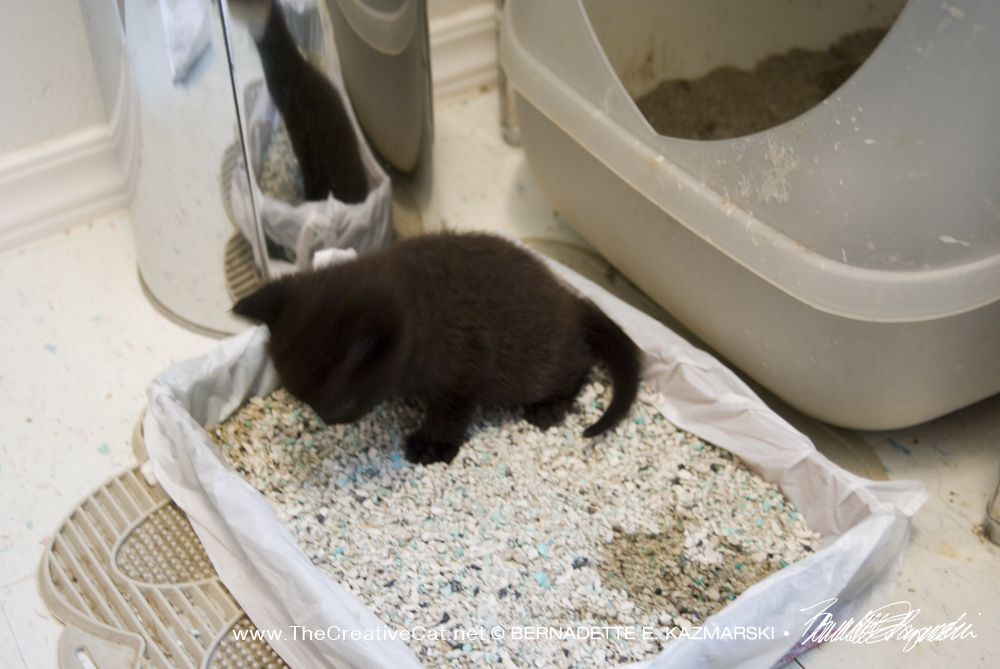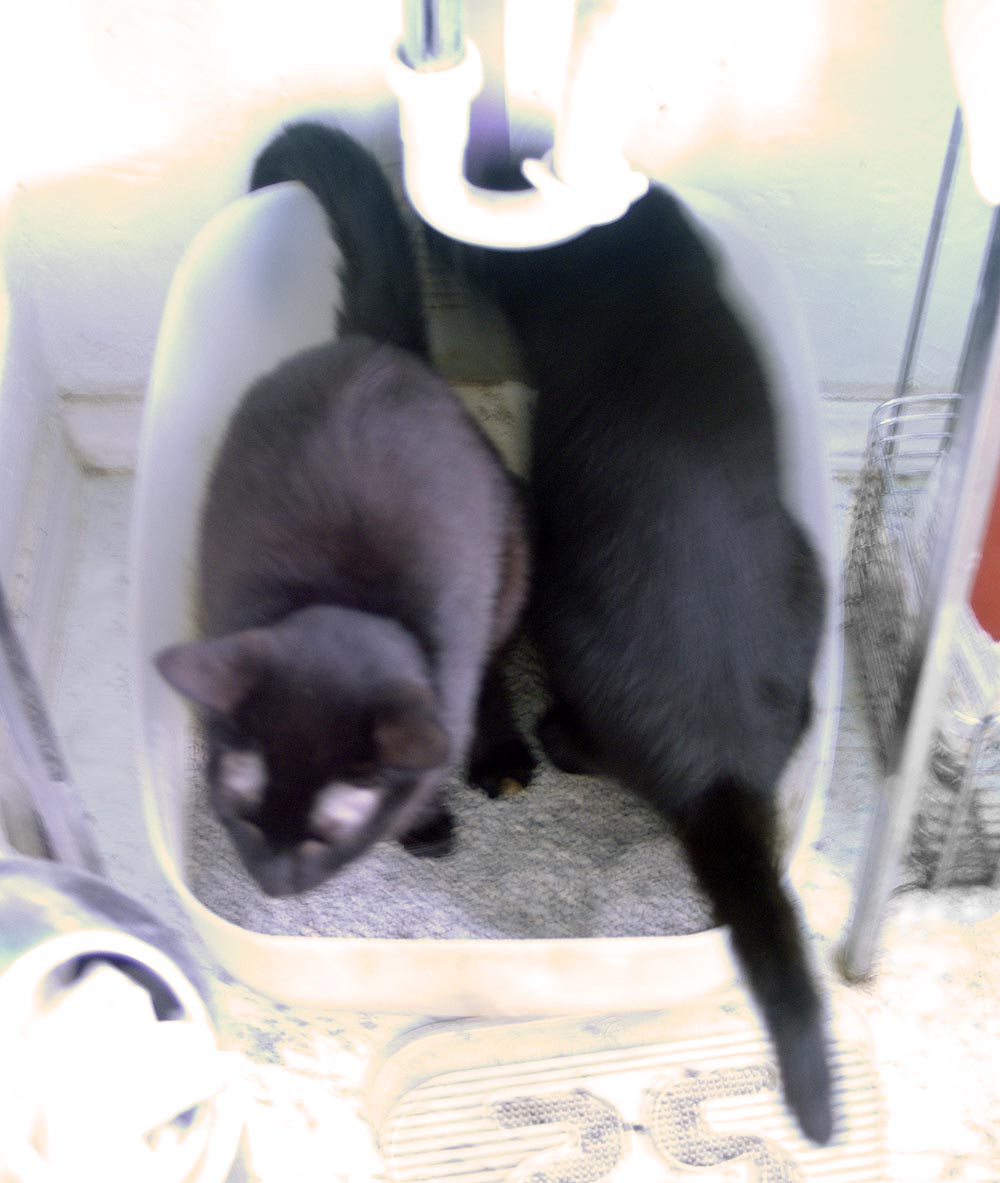Changing the Conversation About Cat Pee

AAFP/ISFM Guidelines for Diagnosing and Solving House-Soiling Behavior in Cats
Practical Guidelines Emphasize that House ‐ Soiling is Not Due to Spite/Anger Toward Owner
.
I’ve told people for years that “cats speak in pee.” It’s a unique language all their own, and to you that language may be saying, “I hate that food you got me!” or “I don’t like your new ‘friend’,” or any number of other insults to you. It gets a laugh when you say that, and I always hope it changes the direction of the conversation from “I have to get rid of this cat” to “I have to help this cat.” We focus on the pee, but not on what the cat is saying in a language the entire species commonly uses to communicate.
No matter how much we love them, even the nicest home with cats has known a cat who won’t use the litter box. It’s frustrating and often infuriating when a cat who is affectionate and seems totally happy urinates anywhere else, and seemingly everywhere else, in the house except in the litter box, often damaging or destroying things you treasure, and sometimes right in front of you, looking right at you. And the lingering smell…It’s easy to think your kitty is doing this because they’re mad at you or they are getting back at you for something you’ve done because it feels so personal. It’s very hard to convince people it’s something else entirely, and it’s hard to give up that idea and understand they are actually telling you something constructive about a basic need for themselves. Unfortunately, most of us have not learned this language and thousands of cats each year die because of that.
Redefining the action in professional guidelines
What we call something often tells just as much about how we feel about something as what it actually is, and redefining it helps us to understand it better. To help us understand this secret feline language the American Association of Feline Practitioners (AAFP) changed a term cat caretakers are all too familiar with, “inappropriate urination”, to “house soiling” because “ ‘house soiling’ implies no misconduct by the cat and thus, may encourage owners to better follow veterinary recommendations.” Their recently released AAFP/ISFM Guidelines for Diagnosing and Solving House-Soiling Behavior in Cats emphasizes that this unwanted behavior is not due to spite or anger toward the owner, but because the cat’s physical, social, or medical needs are not being met.
This document provides practice guidelines for veterinary professionals was written by the American Association of Feline Practitioners (AAFP) and the International Society of Feline Medicine (ISFM) and has been endorsed by the American Animal Hospital Association (AAHA).
The AAFP is devoted to the study and care of cats and “has encouraged veterinarians to continuously re‐evaluate preconceived notions of practice strategies in an effort to advance the quality of feline medicine practiced,” and if any one area about cats is filled with preconceived notions it’s litter box use and non-use. They provide veterinary practices with guidance based on scientifically documented information when it is available, and when not it’s based on the accumulated clinical experience of the authors.
Four basic categories of house soiling
These guidelines help veterinarians identify what’s behind the house soiling and include a cat owner questionnaire which can be customized for clinic use. Within the document is an algorithm to help identify and manage the four basic categories of house soiling, including not only urinating but also defecating outside the box and scent marking or “spraying” behavior, defining and discussing each one in depth and suggesting treatments:
• Medical etiologies
• Feline idiopathic cystitis
• Marking behavior
• Elimination related to primary environmental or social fact
Five pillars of feline environmental needs
House soiling may happen because the litter box itself is inappropriate, but it may also be because of something totally unrelated in the environment, and this is where I’ve always meant the statement that cats speak in pee—something is wrong that humans can’t identify and it’s frightening to them or feels threatening and they have no means to communicate that to you except to warn you in a way that gets your attention.
The guidelines “propose and explain two universal suggestions for the management of all cases of house soiling”: (1) optimizing the litter box/tray and (2) meeting the “five pillars” of feline environmental needs:
• Provide a safe place
• Provide multiple and separated key environmental resources: food, water, toileting areas, scratching areas, play areas, and resting or sleeping areas
• Provide opportunity for play and predatory behavior
• Provide positive, consistent and predictable human–cat social interaction
• Provide an environment that respects the importance of the cat’s sense of smell
They also include specific treatment suggestions for each diagnostic category, take-home instructions for cat owners, and what steps practitioners can take if the frustrated client is considering euthanasia.
Veterinarians, animal professionals, shelters and rescues, and owners
Anyone who lives with and cares for cats in any way should take a read through this document and its associated questionnaire and take-home instructions to learn more about the conclusions of the AAFP and IFCM, share the information and encourage the ideas within. It’s exciting to see an understanding of an issue we are all familiar with and a multi-faceted explanation for what they are doing. We’ve come a long way from getting a cat as a pet because they don’t require any care to understanding this intelligent and complicated species.
You can begin reading about this topic on the AAFP website and follow the links to the document published in the July 2014 Journal of Feline Medicine and Surgery.
Also take a little time to read about the AAFP and ISFM . They are changing the conversation about more than cat pee.


Sometimes it’s all in the family.

. . . . . . .
Through the years I’ve walked many people through litter box issues with their cats with just the raw knowledge we have had up to now, but also the understanding that it’s not a simple issue and cats may seem haughty and spiteful sometimes but soiling their living quarters goes way beyond their normal fastidiousness and biologically makes no sense for a species that is often prey to other animals. Often this ended in resolving the issue, but if not it did help the human to further understand the cat’s behavior. Unfortunately a few cats still ended up being surrendered, even when I’d offered to take them rather than see them be labeled unadoptable and likely euthanized. I have been glad to hear that in the past decade the shelters around me have been offering more and more guidance for people to help keep these cats from being relinquished.
One cat I cannot forget belonged to a customer of mine who I saw frequently and I heard about his huge and wonderful long-haired gray cat they’d adopted as a kitten, Smoky, nearly each time we talked. About a decade go the man’s wife developed a life-threatening bacterial infection followed by a severe auto-immune response that frightened them both and required a good bit of care and even rearranging the house for a while. Smoky, 15 years old at the time, began both urinating and defecating outside the box, and I knew this big affectionate cat was just as worried as they were and this was how he expressed it. As I heard the progress I knew what was coming and I offered to take Smoky, to temporarily foster while they dealt with the illness or permanently if it turned out they couldn’t take him back. Understanding the hospital visits and stays I made it perfectly clear to him that he could bring Smoky to me at any time and I would take him in.
But he didn’t. One day in mid-August he told me they’d taken Smoky to the shelter, thinking, as many people do, that certainly someone else would love this cat because he was so nice. But we know a senior cat with known house soiling issues arriving in the shelter in mid-August doesn’t stand much of a chance. I asked why he didn’t call me, I’d offered repeatedly and he said he didn’t want to bother me, he knew I was caring for my mother and his wife was upset, she was ill, and he thought that was the best thing to do. I try not to be hurtful on top of hurt, but I told him he might as well have just killed Smoky himself, a horrible thing to say, but he knew that. I searched all over the shelters to find Smoky but it was at least two weeks later and I never found a trace. I found it hard to forgive him, and I will never forget. For cats like Smoky, and cat owners like him, I have always done my best to intervene in these issues knowing where it often leads. And for the same reasons, I am glad to have these guidelines to help me with people who will never even consider taking their cat to a veterinarian for this behavior. I hope this document saves many lives and helps us understand our feline companions even more.
Read more articles about Health and Safety and Veterinary Medicine.
Browse some rescued cats and kittens!
Click here to vote for TheCreativeCat.net in the Petties.
Best Cat Blog
Best Blog Post
Best Video Post

Read more about the Petties in this post.
All images used on this site are copyrighted to Bernadette E. Kazmarski unless otherwise noted and may not be used without my written permission. Please ask if you are interested in using one in a print or internet publication. If you are interested in purchasing a print of this image or a product including this image, check my Etsy shop or Fine Art America profile to see if I have it available already. If you don’t find it there, visit Ordering Custom Artwork for more information on a custom greeting card, print or other item.
© 2014 | www.TheCreativeCat.net | Published by Bernadette E. Kazmarski
—
Weekly schedule of features:
Sunday: Essays, Pet Loss, Poetry, The Artist’s Life
Monday: Adoptable Cats, TNR & Shelters
Tuesday: Rescue Stories
Wednesday: Commissioned Portrait or Featured Artwork
Thursday: New Merchandise
Friday: Book Review, Health and Welfare, Advocacy
Saturday: Your Backyard Wildlife Habitat, Living Green With Pets, Creating With Cats
And sometimes, I just throw my hands in the air and have fun!
—

